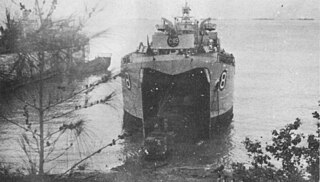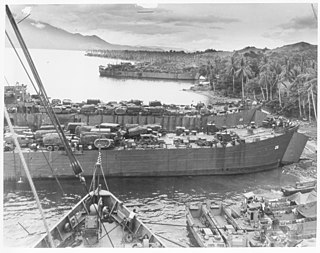
SS Timothy Bloodworth was a standard Liberty ship built for the United States Maritime Commission during World War II. The vessel was built by Delta Shipbuilding Company of New Orleans in 1943. She was named in honor of Timothy Bloodworth, an American teacher who made muskets and bayonets during the American Revolutionary War, then went on to become a statesman in North Carolina.
Empire Duke was a 7,067 GRT cargo ship that was used during the Second World War in investigations into the metallurgical problems that Liberty ships were suffering from.
Pengreep was a 8,806 GRT cargo ship that was built in 1914 by Irvine's Shipbuilding and Drydock Co Ltd, West Hartlepool, Co Durham, United Kingdom for a British company. She was requisitioned by the Admiralty on completion and returned to her owners in 1920. She was seized in June 1940 by Vichy French forces and renamed Ste Jacqueline. In 1942, she was seized by British forces, being renamed Pengreep in 1943. She was passed to the Ministry of War Transport (MoWT) later that year and renamed Empire Fal. In July 1945, she was scuttled with a cargo of gas bombs.

HM LST-8 was a Landing Ship, Tank of the Royal Navy during World War II. Built as a LST-1-class tank landing ship in the US, she was transferred to the Royal Navy in March 1943,

USS LST-12 was an LST-1-class tank landing ship of the United States Navy. LST-12 was transferred to the Royal Navy in early 1943, to serve in the Mediterranean Theater of Operations during 1943 and 1944. She never saw service with the US Navy.

HM LST-13 was an LST-1-class tank landing ship of the United States Navy built during World War II. She was transferred to the Royal Navy in April 1943, before being commissioned into the USN. Like many of her class, she was not named and is properly referred to by her hull designation.

USS LST-17 was a United States Navy LST-1-class tank landing ship used in the European Theater of Operations and Asiatic-Pacific Theater during World War II and manned by a United States Coast Guard crew. Like many of her class, she was not named and is properly referred to by her hull designation.

USS LST-18 was a United States Navy LST-1-class tank landing ship used exclusively in the Asiatic-Pacific Theater during World War II and manned by a United States Coast Guard crew. Like many of her class, she was not named and is properly referred to by her hull designation.

USS LST-21 was a United States Navy LST-1-class tank landing ship used primarily in the Europe–Africa–Middle East Theater during World War II, but also transported British forces from Calcutta and landed them at Regu Beach, Burma.

USS LST-24 was a United States Navy LST-1-class tank landing ship used exclusively in the Asiatic-Pacific Theater during World War II and manned by a United States Coast Guard crew. Like many of her class, she was not named and is properly referred to by her hull designation.

USS LST-25 was a United States Navy LST-1-class tank landing ship used in the European Theater of Operations and Asiatic-Pacific Theater during World War II.

USS LST-26 was a United States Navy LST-1-class tank landing ship used in the Asiatic-Pacific Theater during World War II and manned by a United States Coast Guard crew. Like many of her class, she was not named and is properly referred to by her hull designation.

USS LST-27 was a United States Navy LST-1-class tank landing ship used exclusively in the Europe-Africa-Middle East Theater during World War II and manned by a United States Coast Guard crew. Like many of her class, she was not named and is properly referred to by her hull designation.
Graigaur was a 7,047 GRT cargo ship that was built in 1941 by Swan, Hunter & Wigham Richardson Ltd, Newcastle upon Tyne, Northumberland, United Kingdom, as the CAM ship Empire Foam for the Ministry of War Transport (MoWT). She was sold in 1946 to Graigaur Shipping Co Ltd and renamed Graigaur. She was sold in 1957 to Marinos & Frangos Ltd and renamed Maltezana. She was sold to the Great Southern Steamship Co Ltd., Hong Kong in 1958 and renamed Johore Bahru, serving until she was scrapped in 1963.
Stad Schiedam was a 6,140 GRT cargo ship which was built in 1942 as Empire Fortune by John Readhead and Sons Ltd, South Shields, County Durham, United Kingdom for the Ministry of War Transport (MoWT). She was transferred to the Dutch Government in 1943 and was renamed Van Honthorst. She was sold to the Halcyon Lijn in 1945 and renamed Stad Schiedam, serving until she was withdrawn in 1961. She was scrapped in 1962.

USS LST-28 was a United States Navy LST-1-class tank landing ship used exclusively in the Europe-Africa-Middle East Theater during World War II. Like many of her class, she was not named and is properly referred to by her hull designation.

USS LST-30 was a United States Navy LST-1-class tank landing ship used exclusively in the Europe-Africa-Middle East Theater during World War II. Like many of her class, she was not named and is properly referred to by her hull designation.
USS LST-33 was an LST-1-class tank landing ship of the United States Navy built during World War II. She was transferred to the Royal Hellenic Navy on 18 August 1943, before being commissioned into the USN, and was renamed Samos (Σάμος).
USS LST-36 was an LST-1-class tank landing ship of the United States Navy built during World War II. She was transferred to the Royal Hellenic Navy on 23 August 1943, before being commissioned into the USN, and was renamed Lemnos (Λήμνος).

USS LST-37 was an LST-1-class tank landing ship of the United States Navy built during World War II. She was transferred to the Royal Hellenic Navy on 18 August 1943, before being commissioned into the USN.













